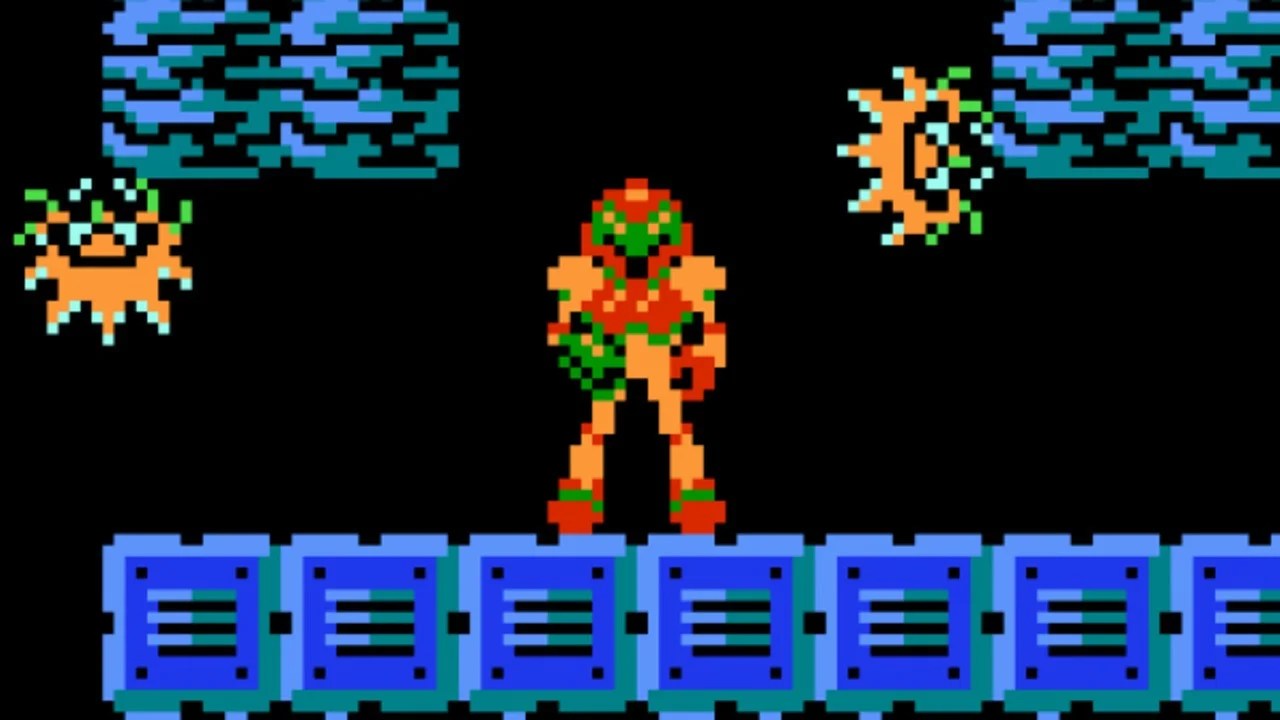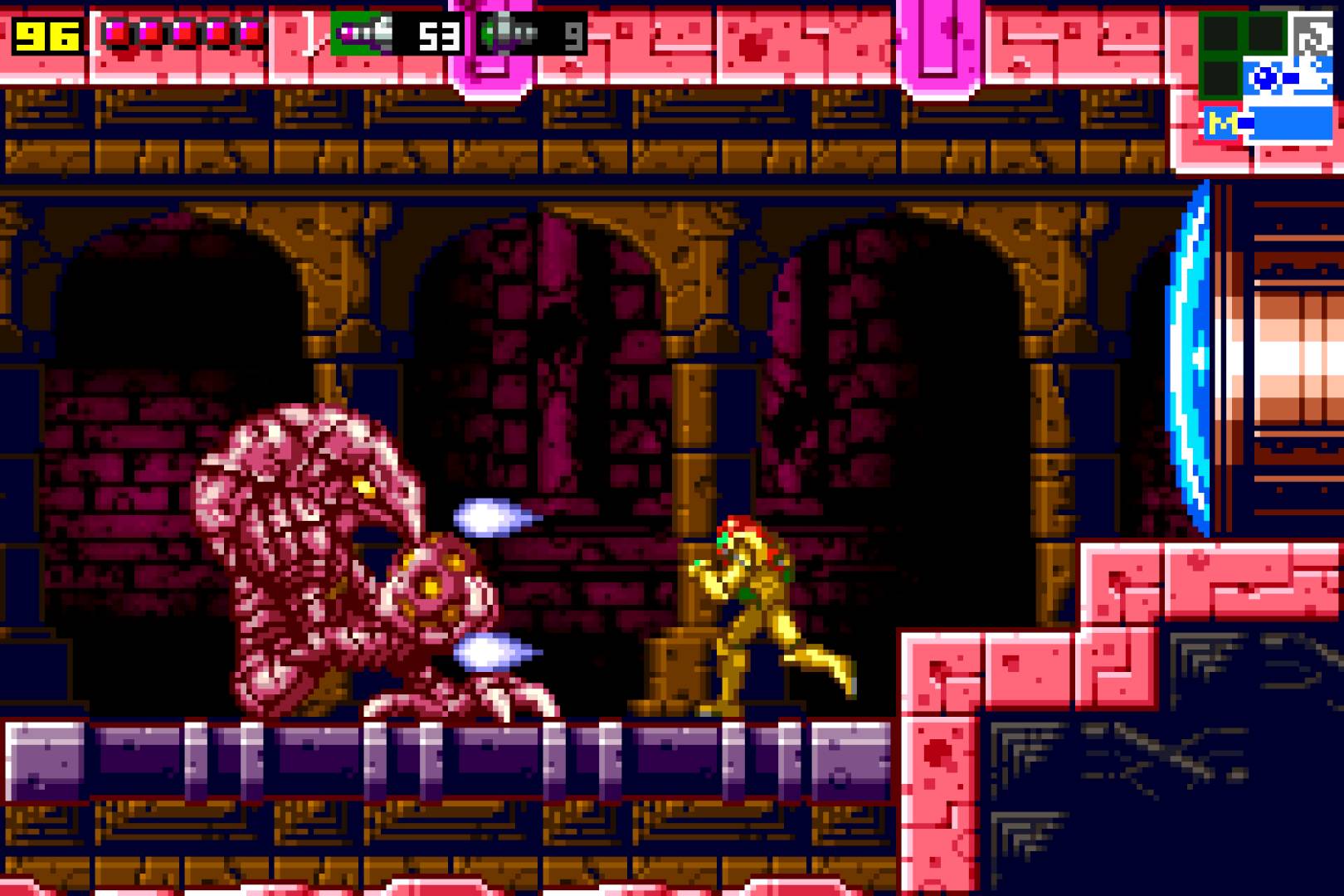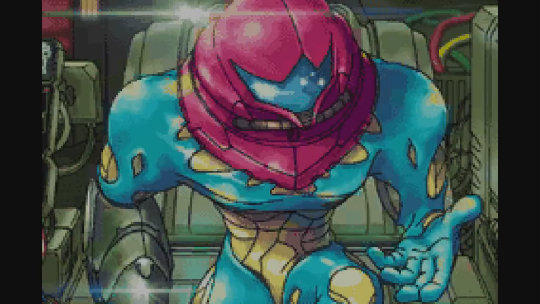I suspect that there’s a pretty sizable chunk of people who would gladly call Metroidvania their favorite video game genre, but who have never played a Metroid game. That’s a problem. Sometimes, when a classic is too classical, it can become a bit of a headache. Revisiting a really beloved game can become a chore when you’ve seen its best ideas executed better by games that came later.
Not so with Metroid. Nearly every 2D Metroid game is still a great time, even when placed next to the wave of wonderful indie Metroidvanias we’ve seen recently. Unfortunately, “nearly” is the operative word in that sentence. There are definitely downright bad 2D Metroid games, just as there are great ones. So allow me to walk you through every 2D Metroid game, from the clunky to the clever.
Metroid II: Return of Samus (1991)

The original Game Boy was an incredible piece of hardware. It was the first handheld gaming console to truly demonstrate the types of games people wanted to play on the go. It was home to some incredible third-party offerings and some even better first-party Nintendo games.
It was not the right place for Metroid II.
Metroid II: Return of Samus simply doesn’t play very well on the Game Boy. Exploring an uncharted planet without any semblance of guidance or direction was already a bit difficult in the original Metroid, but at least areas were visually distinct. Metroid II is beholden to the Game Boy’s monochromatic screen, which means it’s incredibly difficult to tell where you are most of the time. Metroid II also suffers from clunky controls and enemy design that makes Samus feel less like a mighty bounty hunter searching for deadly Metroids and more like a random lady who is stumbling on aliens at random. It’s a game with good ideas that simply couldn’t have worked on the original Game Boy.
You can play it on the Switch if you’re interested, having been ported onto the console in 2023. It’s a fun enough game, but like others on the list, it hasn’t aged all that well.
Metroid (1986)

Metroid is the rare series where even die-hard fans can mostly acknowledge that the first game isn’t all that playable. The original Metroid lays some really solid foundations, but a lot of the series’ biggest problems are at their absolute worst here.
The biggest problem with Metroid is a pretty simple one: there’s no map. Some franchise purists are surely already readying their explanations (“It’s not supposed to have a map,” “You should make your own map,” and so on), but the simple fact of the matter is, Metroid feels really bad without a map. Exploration doesn’t feel at all meaningful when you don’t know where you’ve been or where you’re going. It doesn’t help that Metroid has a pretty shoddy control scheme and fairly uninteresting traversal. Maybe I’m just too pampered by modern design philosophy, but this one is not very fun to go back to.
It has been re-released on a bunch of different consoles, however. You can play it on the following consoles (along with the year it was released):
- Famicom Disk System (1986)
- Nintendo Entertainment System (1987)
- Game Boy Advance (2004)
- Wii – Virtual Console (2007)
- 3DS – Virtual Console (2012)
- NES Classic Edition (2016)
- Nintendo Switch (2018)
It’s still the same old game though.
Metroid Zero Mission (2004)

Metroid Zero Mission is a remake of the original Metroid, and hey, we’ve got a map now! We’ve also got… map markers. Oh boy. Yes, Zero Mission is a bit of an over-correction. It’s more readable than the original Metroid thanks to its map, and it’s certainly more playable thanks to some necessary gameplay overhauls, but it’s also just a little too hand-holdy.
Every time you can access a new area in Zero Mission, the game loudly announces that fact with a bright flashing indicator on your map. It doesn’t ruin the game by any means (the original Metroid‘s map is full of off-the-beaten-path things to do) but it does hamper the experience of exploration. If the original game was too vague, this one is just a touch too specific. It’s still a very good time, but one that would benefit from a bit less guidance.
Metroid Fusion (2002)

I actually like Metroid Fusion a lot, but it’s not a Metroid game. It’s a really good 2D platform shooter, and a really smart riff on Alien, but… it’s not a Metroid game!
Fusion has almost no exploration to speak of. At its most basic, Metroid is about finding your way around an uncharted place and discovering what lies at its center. It’s about coming up with new and interesting ways to use the tools at your disposal to reach previously inaccessible places. If Metroid Zero Mission didn’t have enough of that, then Metroid Fusion has absolutely none of it. There is a robot named Adam who constantly tells you where to go and how to get there, and he sucks.
Fusion is very good. It’s one of my favorite Game Boy Advance games. Every time I decide to replay the Metroid series, though, I usually elect to skip Fusion. In my mind, it’s its own (very good!) game with no relation to Samus’ continued adventures.
Super Metroid (1994)

Super Metroid was a pretty incredible leap forward. Three years after Metroid II found itself hampered by underpowered hardware, this undeniable classic took full advantage of the jump to the Super Nintendo. Even now, nearly thirty years later, it’s still a little hard to believe just how big this game is.
Super Metroid brings Samus back to Zebes, the setting of the original game. This time, Zebes is infested by space pirates (the best kind of pirates) who want to use the power of the Metroids for themselves. Zebes is a lot more exciting to explore this time – Samus’ toolkit has gotten larger, and every weapon at her disposal feels like a piece in a massive puzzle. Solving that puzzle is the crux of Super Metroid. I’ve said it before and I’ll say it again: Metroid is about exploration, and Super Metroid makes exploring feel great.
You can relive this classic on the Nintendo Switch again, having been re-released all the way back in 2019.
Metroid Prime Pinball (2005)

Okay, so it’s not exactly a Metroidvania game, but this a Metroid list, so the pinball game stays. Technically it’s 2D as well, so it double makes the list.
It’s a classic pinball game in every sense, except that it uses the Metroid universe as inspiration for it’s design and story, I guess. Despite not doing anything wildly different from other pinball games, it was well-received by both users and critics alike.
If you want to experience the Metroid universe but in pinball style, this is your game. Otherwise, stick to one of the others on this list for the classic Metroid experience.
Metroid: Samus Returns (2017)

After a decently long time away from the spotlight, in 2017, Samus returned to Nintendo handhelds with Metroid: Samus Returns, a 3DS remake of Metroid II courtesy of developer Mercury Steam. In a lot of ways, Samus Returns is like Metroid II, but it differs in one key area: it’s really good!
Samus Returns is the first 2D Metroid game where Samus actually feels like a bounty hunter. The majority of the game is spent hunting down Metroids by tracking their DNA. In the original Metroid II, “hunting” the aliens wasn’t really possible because there was no way to see where you were. You either walked in on them or you didn’t. Here, you can clearly see where the Metroids are hiding, and you can prepare to bring them down. When you catch them, the tools you have for exterminating them are pretty excellent. Samus Returns is one of the only Metroid games with truly great combat, and it makes Samus feel incredibly strong. Samus Returns lacks a bit of exploration, but the issue isn’t as bad as it is in Fusion or Zero Mission, and the game makes up for it with incredibly smooth and fun moment-to-moment gameplay.
Metroid Dread (2021)

Recency bias be damned, Metroid Dread really is that good. The first mainline Metroid game in nearly two decades and the first home-console 2D Metroid game since 1994, against all odds, lives up to the hype. Mercury Steam returns here and gives Samus an even heftier arsenal of powerful weapons that make this game feel absolutely incredible.
Beyond that, Dread absolutely nails exploration. The game strikes a very impressive balance in that it’s very difficult to get lost but it also constantly feels like you’re finding something new. It feels like Metroid, but without the headaches people often associate with Metroid. It’s the kind of game that I’d recommend to almost everyone – it’s a great action game for people who love action games, a great exploration game for people who love exploring, and a great Metroid game for people who love Metroid.








